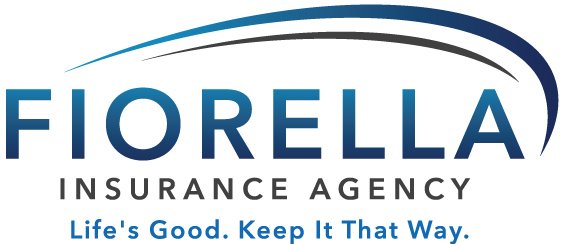Health care spending in the United States has been increasing for decades. The Affordable Care Act (ACA) has been a hot topic in recent years, and many are asking: does the ACA lower health care costs? How does the ACA reduce healthcare costs? Answering this question is not straightforward. Though there may be lower health care costs related to the ACA, it is vital to comprehend how these alterations influence people, families, employers, and health insurance systems prior to forming any opinions regarding total expense decrease.
In this blog post, we’ll take an in-depth look to answer the question how does the ACA reduce healthcare costs, so that you can make an informed decision on whether or not it reduces them for you.
Table of Contents
Understanding the ACA
The ACA, known colloquially as Obamacare, is a wide-reaching healthcare reform law passed in 2010 with the goal of making health care costs and health insurance more affordable and accessible for people and families. The ACA strives to reduce expenses, expand coverage choices, and provide monetary aid for those in need. The ACA was implemented in 2010 to make health insurance more cost-effective and accessible for individuals and families through a range of measures. To achieve this goal, it cuts costs by expanding Medicaid eligibility, creating state-based marketplaces where people can shop for plans with subsidies based on income level; eliminating pre-existing condition exclusions from private plans sold on the individual market; requiring insurers to offer certain essential benefits such as maternity care or mental health services at no additional cost-sharing (deductibles/copays); caps out-of-pocket spending limits; and imposes taxes to fund these initiatives. The ACA assists in controlling medical expenses by stimulating competition between insurers, giving tax credits and subsidies to those with low incomes so they can manage premiums, providing preventive care services without cost, necessitating employers with 50 or more full-time employees to offer their staff sufficient health coverage, and limiting out-of-pocket expenditures to protect people from unforeseen medical bills. The ACA implementation has resulted in changes to health policy that aim to reduce health care spending for insured patients. The Affordable Care Act offers numerous financial advantages for individuals and families to get health coverage, rendering it a vital element of the health care system. Understanding how tax credits, subsidies, lower premiums, and out-of-pocket costs work in conjunction with preventive care coverage at no cost to patients can help maximize these benefits and improve the health care system.Key Takeaway: The ACA helps to reduce healthcare costs by providing tax credits and subsidies for lower-income individuals, offering free preventive care services, implementing shared responsibility requirements between employers and employees, and limiting out-of-pocket expenses. In summary, the ACA is a successful means of minimizing pricey medical costs.
Cost Savings for Individuals and Families
The ACA offers tax credits and subsidies to assist individuals and families in covering the cost of health insurance. Tax credits are available to those who purchase health insurance through the Marketplace, and subsidies are offered to lower-income individuals to reduce out-of-pocket costs. Tax credits can be used to reduce the amount of money paid towards premiums each month, thereby making health insurance more affordable. Subsidies can also be used to help cover expenses such as copays, deductibles, and coinsurance for medical care. The ACA has implemented rules in the health care system that limit the amount insurers can charge in premiums relative to an individual’s income, resulting in more affordable health insurance.
-
Save
This means that even if an individual’s income is too high to qualify for a subsidy, they may still benefit from lower premium rates due to the ACA’s rules on cost sharing. In addition, many plans now have caps on out-of-pocket expenses so that individuals don’t have large unexpected medical bills after receiving care.
The ACA necessitates that all plans on the Marketplace must provide preventive care at no cost to patients, including copays or deductibles prior to coverage. This includes things like cancer screenings, immunizations, annual checkups, and other important tests which could detect serious illnesses early on when they are easier and less expensive to treat effectively.
The ACA can offer considerable cost reductions for individuals and families, especially with the subsidies and tax credits available. Employers also benefit from the ACA’s provisions such as small business tax credits, employer mandate penalty relief, and shared responsibility provisions.
Key Takeaway: The ACA facilitates access to more cost-effective health care, offering tax credits and subsidies for insurance purchases, capping premiums as a proportion of income, and removing expenses related to preventive services. The ACA is aiding individuals to cut down on their health care expenditures.
Cost Savings for Employers
The ACA offers potential cost-reducing benefits for employers. Small business tax credits are available to employers with fewer than 25 full-time equivalent employees and average annual wages below $50,000. These tax credits can be used to offset the costs of providing health insurance coverage to employees. Penalty abatement may be obtainable for employers under the ACA’s employer mandate regulations. Under the ACA, employers with 50 or more full-time equivalent employees must either provide their workers’ health insurance or face a penalty. Small businesses may be able to lessen the financial load of providing healthcare coverage for employees with tax credits. For eligible businesses, these credits are available upfront and can be used immediately towards paying premiums for employee plans. This helps keep costs down and makes offering quality healthcare benefits more affordable for small businesses that might otherwise struggle financially in doing so. The ACA has facilitated compliance for companies, providing a less onerous penalty framework in the event of non-adherence to stipulated regulations. Furthermore, the shared responsibility provision offers a viable alternative for large businesses that are unable to offer health insurance plans by allowing them to pay a fee instead; this is especially beneficial in cases where an affordable plan cannot be found that meets all needs and budget restrictions prevent covering associated expenses internally. Overall, there are numerous cost savings opportunities available through the ACA for both individuals and families as well as employers looking for ways to provide quality healthcare options at reasonable prices while still meeting compliance standards set forth by law. By taking advantage of these incentives, companies can ensure their staff members receive adequate care without breaking the bank; a win-win situation. The ACA offers employers considerable financial gains, which can be a boon to smaller companies. The next heading will discuss how the ACA has impacted health insurance markets across the country.Key Takeaway: The ACA offers a variety of fiscal advantages for employers, like tax credits and penalty reductions. This helps keep healthcare costs down while providing quality benefits to employees without breaking the bank; it’s a win-win situation all around.
Impact on Health Insurance Markets
The ACA has increased competition in the insurance market by allowing individuals and families to shop for coverage from private insurers, as well as providing access to public plans such as Medicaid and CHIP. As a result, consumers have access to more competitively priced health insurance plans with reduced out-of-pocket expenses. In addition, the ACA has expanded access to coverage options for those who were previously unable to obtain health insurance due to pre-existing conditions or other factors. The ACA has enabled many individuals to access medical care that was previously unavailable due to cost or pre-existing conditions, thereby decreasing the burden of uncompensated care. Furthermore, these provisions also help reduce uncompensated care costs by ensuring that people are covered when they need medical attention instead of relying on emergency rooms or charity care programs.The ACA has increased competition in the insurance market, expanded access to coverage for those with pre-existing conditions & reduced uncompensated care costs. #ObamaCare #HealthcareReform Click to Tweet
FAQs in Relation to How Does the ACA Reduce Healthcare Costs?
How does the ACA reduce healthcare costs?
The ACA assists in lowering healthcare expenses by supplying subsidies to those with low incomes, Medicaid expansion for people with meager salaries, introducing health insurance exchanges so customers can compare plans and rates from various insurers, removing limits on essential benefits such as hospital care or prescription drugs, necessitating insurers to cover preventive services without charging a copayment or coinsurance fee, and permitting young adults up to age 26 stay on their parent’s plan. By implementing these measures, the ACA has made medical care more accessible and affordable for many Americans.How did the ACA attempt to reduce cost?
The Affordable Care Act (ACA) attempted to reduce costs by expanding access to health insurance coverage and providing financial assistance for those who need it. It also increased competition in the marketplace, allowing consumers more choices when selecting a plan. The ACA further sought to ensure quality health care by mandating insurers cover certain essential benefits, such as preventive care, without cost-sharing and incentivizing states to expand Medicaid eligibility. The ACA provided inducements to states so that those with low incomes could get coverage without much if any, expense.How has the ACA helped healthcare?
The Affordable Care Act (ACA) has helped healthcare in numerous ways. It has enabled more individuals to obtain health insurance, rendering it simpler and less costly to get coverage. The ACA has also barred insurers from denying coverage or charging higher premiums on the basis of pre-existing conditions, thus safeguarding consumers’ rights. The ACA also requires that all plans cover essential benefits like preventive care, mental health services, and prescription drugs at no additional cost to the consumer. The ACA also invests in public health initiatives and supports community medical centers to ensure everyone can get quality care regardless of their financial status.Conclusion
The ACA has had a considerable effect on the healthcare sector, providing cost-saving advantages to individuals, families, and employers alike. By expanding access to health insurance coverage, increasing competition in markets, and introducing innovative payment models that reward quality care over the number of services provided, the ACA is helping reduce healthcare costs overall. With its continued implementation, we can expect even more cost-saving benefits in years to come – making it easier than ever before for people to get the medical attention they need without breaking their budgets.Contact the Fiorella Health Insurance Agency today for your free health insurance quote.
The ACA assists in lowering healthcare expenses by supplying subsidies to those with low incomes, Medicaid expansion for people with meager salaries, introducing health insurance exchanges so customers can compare plans and rates from various insurers, removing limits on essential benefits such as hospital care or prescription drugs, necessitating insurers to cover preventive services without charging a copayment or coinsurance fee, and permitting young adults up to age 26 stay on their parent’s plan.
By implementing these measures, the ACA has made medical care more accessible and affordable for many Americans.
The Affordable Care Act (ACA) attempted to reduce costs by expanding access to health insurance coverage and providing financial assistance for those who need it. It also increased competition in the marketplace, allowing consumers more choices when selecting a plan. The ACA further sought to ensure quality health care by mandating insurers cover certain essential benefits, such as preventive care, without cost-sharing and incentivizing states to expand Medicaid eligibility. The ACA provided inducements to states so that those with low incomes could get coverage without much if any, expense.
The Affordable Care Act (ACA) has helped healthcare in numerous ways. It has enabled more individuals to obtain health insurance, rendering it simpler and less costly to get coverage. The ACA has also barred insurers from denying coverage or charging higher premiums on the basis of pre-existing conditions, thus safeguarding consumers’ rights. The ACA also requires that all plans cover essential benefits like preventive care, mental health services, and prescription drugs at no additional cost to the consumer. The ACA also invests in public health initiatives and supports community medical centers to ensure everyone can get quality care regardless of their financial status.



